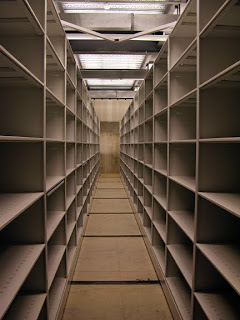We have previously taken a brief look at female doctors who served during the Civil War; today, with Veterans' Day upon us, we will examine a number of women physicians who served in twentieth-century wars.
In 1917, Dr. Bertha Van Hoosen (at that time the president of the Medical Women's National Association) established a War Service Committee; it evolved into the American Women's Hospitals (PDF finding aid). The name was chosen to reflect the good works of the Scottish Women's Hospitals, which sent teams of female doctors and nurses throughout war-ravaged Europe. Although their direct military service had been rejected by the US government, AWH doctors designed their own uniforms and sailed to Europe in 1918, establishing their first hospital in France.

Under the leadership of Dr. Esther Pohl Lovejoy, AWH established hospitals and clinics in various parts of France, Serbia and the Middle East. In 1922, AHW staff witnessed the burning of İzmir (or Smyrna, as it appears from time to time in the correspondence in the collection) and physicians including Dr. Mabel Elliott became heavily involved in treating refugees and orphans throughout Turkey, Armenia and Greece under obviously trying conditions. While most AWH doctors and nurses were never officially members of the military (a few were accepted as contract surgeons, but were not commissioned officers), their service during wartime was certainly comparable - and it laid the groundwork for the next generation.

A bill to allow female physicians full appointments in the Army and Navy Medical Corps was brought before Congress in 1943; while it makes fascinating reading in general, the testimony from Dr. Emily Dunning Barringer apparently had quite an effect on the committee, and what became known as the Sparkman Act was duly passed.

Immediately thereafter, the first woman doctor was commissioned in the Army Medical Corps; Dr. Margaret D. Craighill, dean of Women's Medical College from 1940-1946, was given leave to take up her post. After her appointment, she encouraged newly-minted women doctors to consider a military career. (A small aside - this clipping and photo detailing Dr. Craighill's 1944 WMC commencement address advice is particularly interesting, given that many Japanese-Americans were still in internment camps - and Dr. Toshiko Toyota, a native of Utah, overcame considerable adversity in her medical school career, according to notes in the Faculty Minutes - there were several attempts to have her expelled).

Dr. Craighill, in her capacity as Major Craighill, went on to survey conditions for the Women's Army Corps and recommended that air conditioning be provided as a matter of course for those stationed in hot climates; noting its success in Tehran, she said, "I do hope some of these lessons learned in the Persian Gulf will be carried out in the Pacific" (New York Times, 6/24/45).

Dr. Bernice R. Walters (WMC 1936) was the first woman doctor assigned to shipboard duty in the US Navy. She served aboard the USS Consolation, which was chiefly stationed off the Korean coast, beginning in 1950, but had actually joined the Naval Reserve in 1943. Of her initial induction, she noted, "They didn't even know how to process me...I almost wound up as an apprentice seaman" (Atlanta Journal-Constitution, 11/23/52).

Our collections in this area are some of our most heavily-used by researchers, and yet the role of women doctors in the military and at war seems little-known to the general public; we hope future research and a few upcoming publications will help to correct that deficit.









